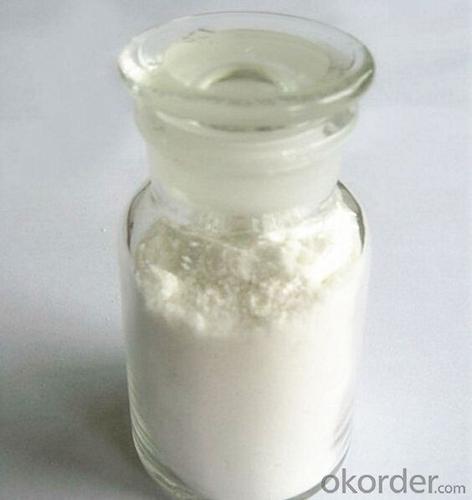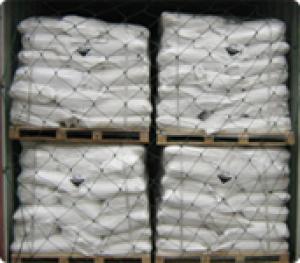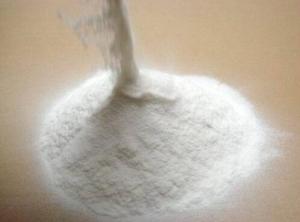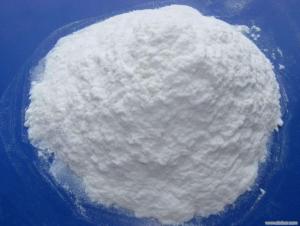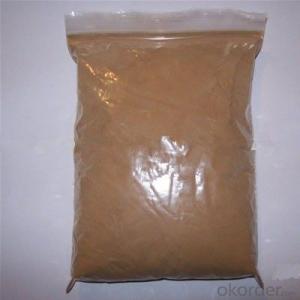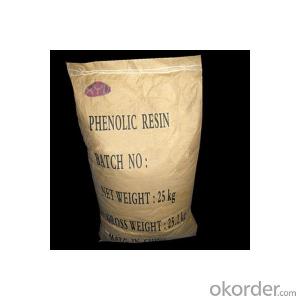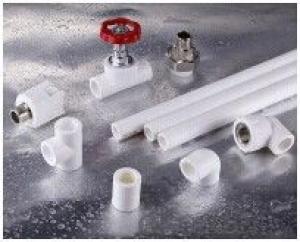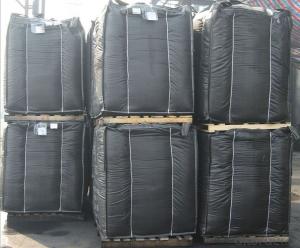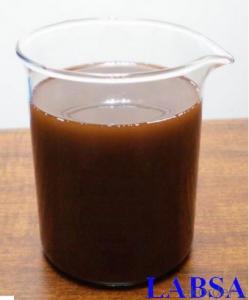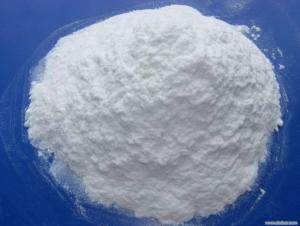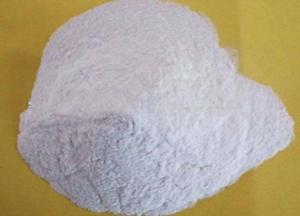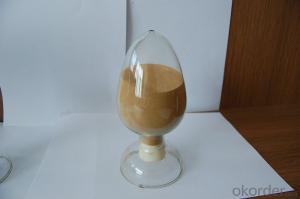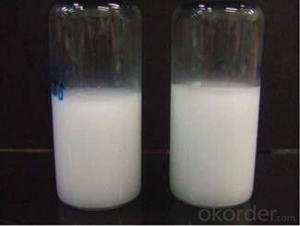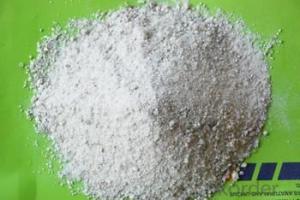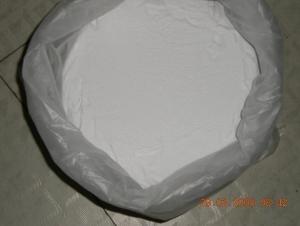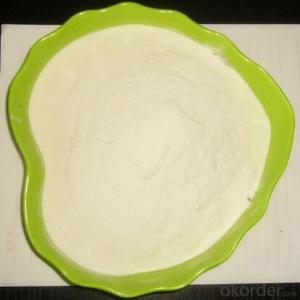Hydroxyethyl Cellulose (HEC)-for oil
- Loading Port:
- China Main Port
- Payment Terms:
- TT OR LC
- Min Order Qty:
- -
- Supply Capability:
- -
OKorder Service Pledge
OKorder Financial Service
You Might Also Like
Product introduction:
HEC is a series of non-ionic soluble cellulose ethers, which can be dissolved in hot and cold water, and has the characteristics of thickening, suspending, adhesive, emulsion, film coating and super absorbent polymers protective colloid, which is widely used in paints, cosmetics, oil drilling and other industries.
Physical and chemical index:
ITEM CAS: 9004-62-0 | INDEX |
Moisture % | ≤5.0 |
Ash content % | ≤1.0 |
Viscosity mpa.s | 300-150000 |
≥82 | |
PH | 5.0-8.0 |
D.S. | 1.8-2.5 |
Appearance | white or off-white fibrous or granular powder, odorless, tasteless |
Application:
Oilfield Industry Application Guide
● HEC thickening agent can be used as thickner of the well workover fluid and cementing agent. Help to provide clarification of the low fixed content solution, thus greatly reducing the structural damage to the wells. The liquid thickening by Hydroxyethyl Cellulose can be easily decomposed by acids, enzymes or oxidants, greatly improving the ability to recover hydrocarbons.
● Fluid in the well, HEC is used as proppant carrier. These liquids can be easily cracked through the process.
● HEC configuration using drilling fluid, based on its low solids content, can effectively increase drilling stability. These properties can be used to inhibit the fluid medium to high hardness of the rock and heavy shale or shale drilling.
● Reinforcement in the cement operations, HEC can reduce the hydraulic friction, minimize the loss of rock and water loss.
Oil industry use recommended:
Specification | Viscosity (2% solution, 25℃) | Application |
CMAX-300DR | 240-360mPa.s | Cementing |
CMAX-100000DR | 80000-120000mPa.s | Oil drilling |
CAMX-150000DR | 120000-180000mPa.s | Oil drilling |
- Q: I used a gas additive once on my car when I had it filled up (STP) for fuel efficiency and added boost, is it advisable? are there any side effects of gas additives?
- As a rule of thumb, are not. One thing I've tried is a fuel system flush with BG. It can be done at a dealership, it's not a 'do-it-yourself'. I noticed a 3% increase in mileage, for the next 10k. That, however didn't justify to me the expense of the procedure. Check some of the reports and studies. Below is just one on those reports. Others can be obtained through a web search as 'gas additives for autos'. In the end, it's your call. Just get the facts, and do the math to see what it's true cost is and if there is any real savings.
- Q: based on our experiment, combining 2 mL water 6mL acetone will not gain 8mL liquid
- In some cases two liqids can mix forming a new solution which has a different density and the volume can vary
- Q: I‘ve not found a good additive for my truck to remove moisture(water) that I‘ve been told by many that is causing havoc with my motor.
- Submarines, hospitals and chemical companies have been doing this for years. It takes a whole lot of DC power to shock pure water, which separates it into hydrogen and oxygen. Basically, you have a nickel cadmium cylinder with a anode (negative) and a cathode (positive) side. Inside there is usually a teflon sleeve to keep the two separated after electrolysis. If they join together, the would spontaneously explode. Which is how the shuttle gets to the moon. The cathode draws the negatively charged oxygen and the anode draws the positively charged hydrogen Thus resulting in the two separate gases. The machines that accomplishes this is very complicated, with numerous gas analyzers, leak detectors and safety mechanisms. Also, these machines have to be monitored virtually 24/7 and cannot be monitored and maintained through just a few simple car gages. Also, the water has to be pure. Any impurities whatsoever could cause an explosion. So, be very careful when playing with this stuff. The problem with this technology, as stated before is that you expend far more energy to separate these two gases, than you could produce by their burning At least with today's technology. It would be very nice to run off of water but also very dangerous and probably not worth the expense, considering the hazards involved. Did I mention the space shuttle?
- Q: Does Biomeer fuel additive (from Cavolution) really work to get better fuel economy?
- They are basically fuel injector cleaners. AND YES they work to improve your MPG (if your injectors are clogged). But nobody uses those fuel additive for every tank (I often add about 1 or 2 tankful before the inspection). Forget all those SAVE GAS scams. This was on NBC morning TV show. The difference is as much as 38% (their claim). There are very simple rules to save gas: (1) drive slow - not too much past 55 (2) accelerate slowly (3) don't brake unnecessarily (4) use cruise control - whenever it is safe to do so. Don't coast - it is NOT safe and it does NOT save gas. The above really works. Using those simple rules I was able to drive from Boston to NYC (210.5 miles) on just 5.112 gallon (94 Civic). That's 41 MPG (94 Civic 187K miles). Actually I was speeding at 72 MPH so I could do even better at 55. WOW !! Assuming you are suffering from bad MPG. Get a tune up : (1) spark plugs (2) spark plug wires (3) coils, (4) distributors, (5) PCV, etc. (6) fuel injector (carb) cleaner - important Check your tire pressure. Get the ODB II scanned to see if it is reading and engine diag code. Sometime failing MAF sensor, O2 sensor or water temp sensor can kill your MPG. The water temp sensor is particularly cheap but a big MPG problem if it fails. The computer thinks that the engine has NEVER warmed and constantly run rich. And failed water temp sensor often does NOT create check engine light. As simple as that. Good Luck.
- Q: Or at all?I‘ve got a ‘93 Lincoln Town car (134k miles) and a ‘92 Dodge Shadow 2.2l 4cyl (38k miles - not a typo). I‘m about to change the oil in both of these cars and I‘ll be using valvoline high-mileage in both (seems to help with brittle seals on the Dodge). I‘ve been thinking about oil and fuel additives, like Lucas. Is the stuff ever worth it or is it snake oil? Experiences? Thanks in advance.
- It is best to use nothing but clean, new oil and keep it clean by changing it often. There are hundreds of additives that make all sorts of claims, but in all my years fixing what people do to their cars I have deduced that most all of them are a waste of money. No engine is designed to use any of them. Just use a high quality oil, as well as a good filter, and good parts in any repair you make and you will get the best results.
- Q: 7 what is the additive inverse and what is the absolute value?
- Yes,you can convert throttle and fit a thumb brake
- Q: what is additive and subtractive colors?
- Additive and subtractive colors has to do with color perception. Pigments (coloring in objects) reflect the color that you perceive. So for example a red square appears red because it predominantly reflects red light. If you took that pigment and mixed it with a blue pigment you get purple, if you add green pigment to that you would get a dark grey. Pigments are subtractive colors. But with light, if you take red light and blue light and combine them you get magenta light, and its brighter than either individual beam because you have twice the amount of light. If you were to add green light to that, you'd get white light and again it would be a brighter beam. Light is additive.
- Q: According to the European commission, food additives are substances added intentionally to food to perform certain technological functions, like to color, to sweeten or to preserve. Food additives can also do more then that, which can be a bad thing. Though food additives can make food look better and even last longer, food additives can create antibiotic resistance, food allergies and hyperactivity. The worst thing about food additives is that it creates antibiotic resistance in humans. This means it will resist any antibiotic that you will take and many people can become immune to important medicines that could have saved their lives. How all this happens is “Giant agricultural businesses pack together cattle by the hundreds to thousands, necessitating the use of germ-fighting antibiotics that we end up swallowing.” (Hawaleska). This result of their care could affect a lot of people. is this good?
- If this is for a school report,you may want to cite a specific reference or two when it comes to supporting the claim that food additives can eventually create super germs(since you state that they will have antibiotic resistance). If there were any studies done my colleges or hospitals on this. You want to list their findings if it offers some sort of evidence to back up what you're writing.
- Q: 2017 National Standard for Food Additives The maximum amount and residual amount of sodium nitrite is understood
- Sodium nitrite is a food additive is a class of toxic, people can eat three grams of death can be directly, so the management must be strict, regular production of nano-manufacturers satisfied that the product packaging has a skeleton logo for cooked food, beans Products, beverages, etc. are also the largest use of the same, each package has a corresponding product on the back of the maximum use, between three thousandths of a thousand to a few points between the number of residues is a test value, Such as a pound of finished products detected with how much. Hope to adopt, thank you.
- Q: i have algae growing on my artificial plants what additive can i use i dont want to remove plants or fish?
- Please don't use an additive. They are not a good move for the tank. Many cause far more problems than they solve. To get rid of the algae, first reduce the lighting on the tank. Only have the lights on when you are there and enjoying your fish and then only up to about 10 hours a day. If you keep them on less than that now, shorten it even more. Second, change more water and be sure to clean the grqavel well as you go. As a minimum change 25% of the water weekly. If you do that now, increase how much you change up to about 50%. Within a week or two you will see far less algea in the tank and within a month it may be completely gone. You can of course remove the plants and wash them then return them to the tank for faster results. MM
Send your message to us
Hydroxyethyl Cellulose (HEC)-for oil
- Loading Port:
- China Main Port
- Payment Terms:
- TT OR LC
- Min Order Qty:
- -
- Supply Capability:
- -
OKorder Service Pledge
OKorder Financial Service
Similar products
Hot products
Hot Searches
Related keywords

